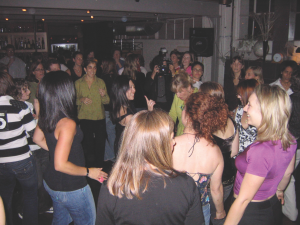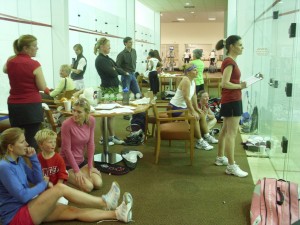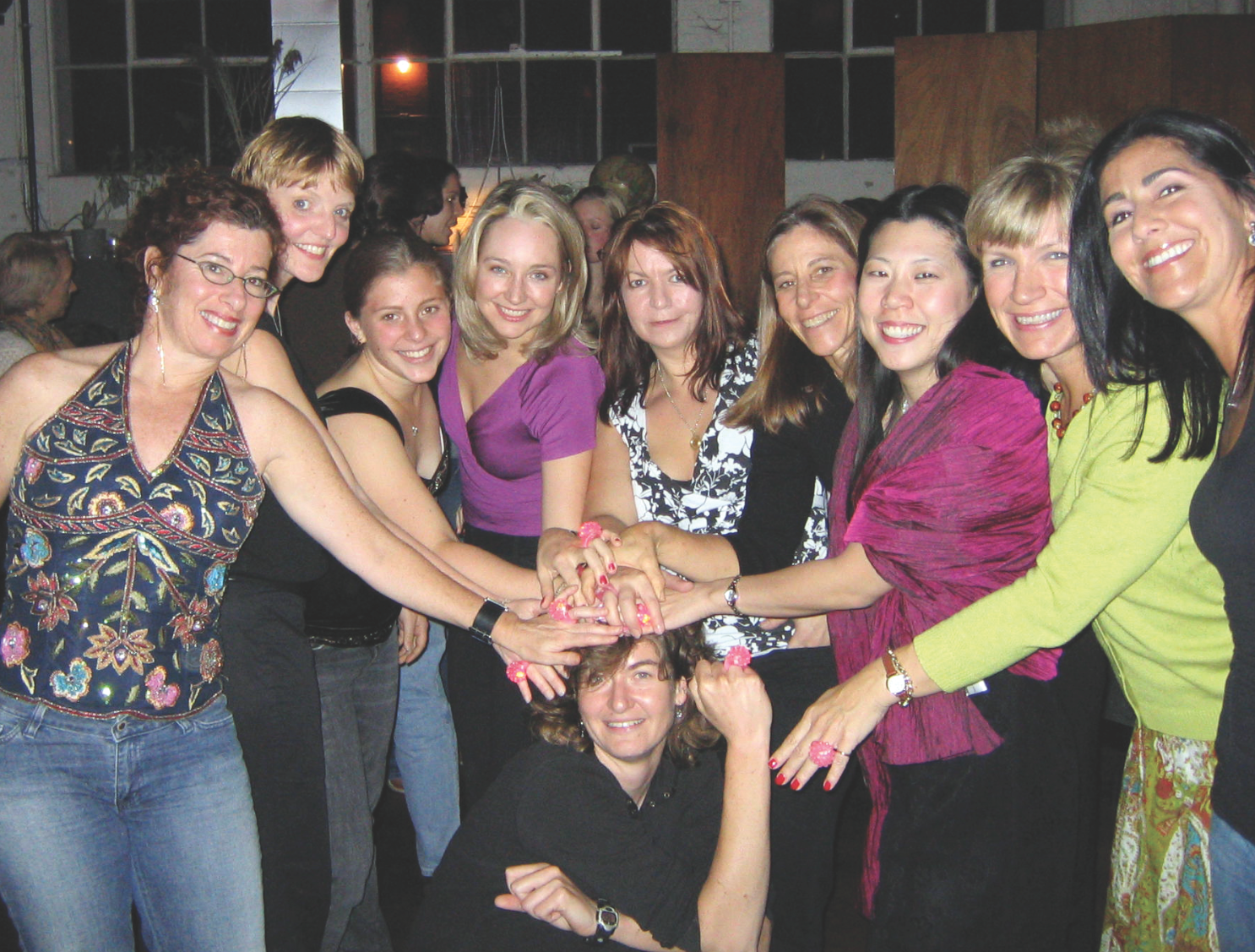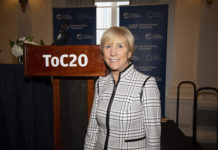By Kim Clearkin

Men are from Mars, Women are from Venus. This was clearly evidenced at our recent club championships. Our tournament director was tearing his hair out trying desperately to accommodate the requirements of the women players. The women were so demanding—they needed to know exactly when they were playing during the entire weekend (crystal ball for match results anyone), who they were playing and, oh yes, was there any childcare available because hubby was out of town and little Johnny has a baseball game from 1-4pm and little Mary has ballet? The men were easy; they cleared their weekend and devoted their time to the tournament. Does this sound familiar?
How many tournament directors do you know who are willing to work around these women’s requirements? Could they even be flexible enough? Sometimes it just may not be possible. However, despite these challenges, we continue to work at building up the women’s draws. We work on the premise that everyone should want to play in a tournament. We tend to measure the success of a squash program as a whole by tournament participation. I would like to suggest that this may not be the best way to judge our success when it comes to women in squash. Maybe “traditional” tournaments do not fit women’s requirements of this sport; perhaps there are different programs that are a better fit for the “average” woman. Should we be thinking about other ways to entice women to play?
In an effort to find out what motivates women to play squash and to increase women‘s participation, the women’s committee of US Squash devised and sent out a survey to all its women members. What programs would women like to be offered to them? Why do women play? What problems do they have with the current offerings? What do they like about the current set-up? Who is playing anyway, and where, and how old are they? If we can answer these questions then maybe we can make sure that we offer programs supporting the woman’s world rather than just the man’s. Clearly there are differing requirements. One size squash may not fit all.
Responses were received from all players of all ages, located throughout the country and even a few from Canada and the UK. College players as well as the more mature players had opinions to offer. These are the main findings:
Why do women play squash and what do they want to get out of it?
- to play other women, not juniors or men.
- to know their schedule for the duration of an event as they are likely to have child responsibilities and family conflicts.
- events to be short and sweet, preferably not taking up the whole weekend.
- to know who else is playing, after all this is a social experience as well.
- to be assured they will be getting a workout.
What do women like about the current situation?
- LOVE the Howe Cup.
- like the idea of promoting a women’s circuit of tournaments but are not sure that the right ones have been identified. This year special emphasis has been placed on US Masters, US Skill levels, Southwest Open (Tempe, Az) and Howe Cup.
What stops a woman from playing?
- Women tend to experience two typical breaks from squash in their life—one immediately after college and the other after having children.
What else could US SQUASH provide specifically for the woman squash player?
- Information on squash tips specifically for women.
- Opportunities to see more women Pro’s.
What suggestions do you have for US Squash Magazine articles?
- More articles on squash playing women who didn’t necessarily play as a junior, but took up the sport as an adult.

Women play squash for fitness and fun
The results of the survey support the Women are from Venus assertion that “a woman’s sense of self is determined through the quality of her relationships.” Women do play squash for competition but a major part of playing squash is the social interaction. Women want to have fun and have a good workout, maybe see some better players compete, but it is important that they do that in a setting that includes other women. Some women thrive on competition and there are already great programs for them, but for the vast majority of women who are playing squash, competition is not the ultimate goal—fitness and fun are more important.
Most women will therefore be attracted to events where other women are playing, the classic chicken vs. egg dilemma for tournament directors—women won’t enter unless they know other women have entered. They don’t necessarily enter to win, per se, although they do want to know there are other players of similar skill level with whom they will have a good game. This is borne out by my own experience. To cite our club championships again, my squash-playing women will agree with me when I say how mercilessly I had to nag them to enter. The women’s draw was the biggest we have ever had (13 women) but it was like pulling teeth to gain the entries. On the other hand, our training sessions, which last for two hours on a Saturday, are always full with at least 15 players and a wait list. No nagging required from me either. In this situation, women know that other women of similar standard will be attending and they know they will raise a sweat, all in a fun and sociable atmosphere.
Additionally, our monthly women-only Round Robins are always well-attended. Again, a no-pressure, female only social workout. These shorter events are also so much easier for women logistically. Even if the husband/partner is away, childcare for two hours is much easier to find, compared to dealing with a weekend tournament with unpredictable match times.
Howe Cup
Having said all this, the Howe Cup is still the premier event on the women’s squash calendar. It fulfills almost all of the survey wish-list. It is only for women, it is a team format making it more sociable, and many women return to play in this event year after year. Friendships are formed and it is fun to renew them over a cocktail at the always memorable Saturday night party. It is the one weekend a year women will dedicate to squash. They will travel and they will take a risk that their children will survive a weekend with their fathers!
 Team Tournaments
Team Tournaments
Although other national team tournaments could be arranged, it is unlikely that women will travel across the country more than once or twice per year. It is both cost and time prohibitive. It will be interesting to see how successful the upcoming women’s team tournament will be in Arizona in September. This will be a 3-person team event running alongside a WISPA tournament. We are encouraging women to participate in what should be a fun and competitive weekend. Billed as a warm up for Howe Cup, the only potential obstacle it faces is players’ willingness to travel.
Regional formats may also prove to be worth pursuing. The Squash Goddess Slam held in Charlottesville in March proved highly popular as an inaugural regional women-only tournament. Although the event did occupy a traditional weekend, it was designed to be extremely social as well as very competitive. Players were guaranteed at least two good matches against other women (fulfilling the fitness requirement) and also offered an opportunity to watch a WISPA exhibition match and schmooze with other squash women (fulfilling the “fun” requirement).
Recently, I held the first of what we hope will be the annual Bay Area Women’s team tournament. If I was right, it would be an easy event to arrange and women would flock to enter. Held on a Saturday afternoon only, it would assure the players a squash-packed afternoon full of friendly competition. In the end we had eight teams, consisting of three players each. I had hoped for as many as 18 entries, but I surpassed that, and to my relief I didn’t need to pressure anyone into playing. The afternoon was a great success and we look forward to the second annual tournament next year.





